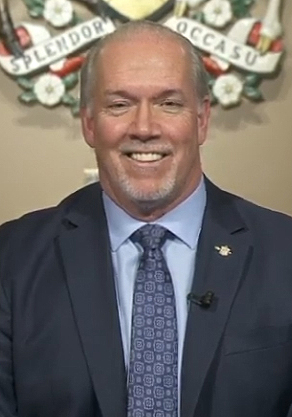
Wednesday May 6, 2020 ~ VICTORIA, BC
by Mary Brooke, B.Sc. ~ West Shore Voice News
BC is starting over, under conditions of an infectious pandemic. For over 100 days we’ve been through the initial impact of figuring this out as a province, as a collection of communities and sectors and as individuals and families.
Now it’s time for progress into ‘the new normal’ as the COVID-19 virus remains active in the world. BC is aiming to guide and produce a gentle emergence from what was effectively a social and economic lockdown that has rolled out with almost daily adjustments since mid-March.
The new plan:
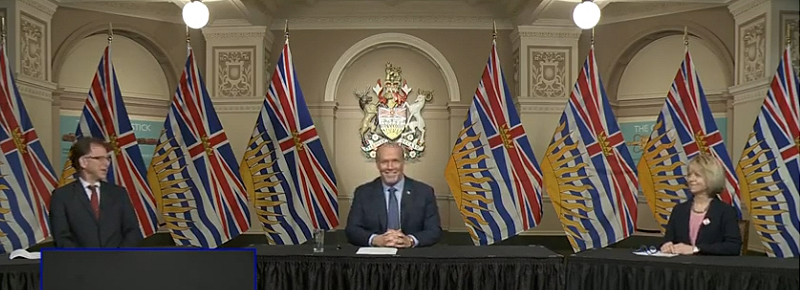
To do that, today, May 6 (a date for the history books), a Restart Plan was announced by Premier John Horgan. He was accompanied by BC Health Minister Adrian Dix and Provincial Health Officer Dr Bonnie Henry. Their presentation area for the TV cameras was set up in the rotunda area of the BC Parliament buildings in Victoria.
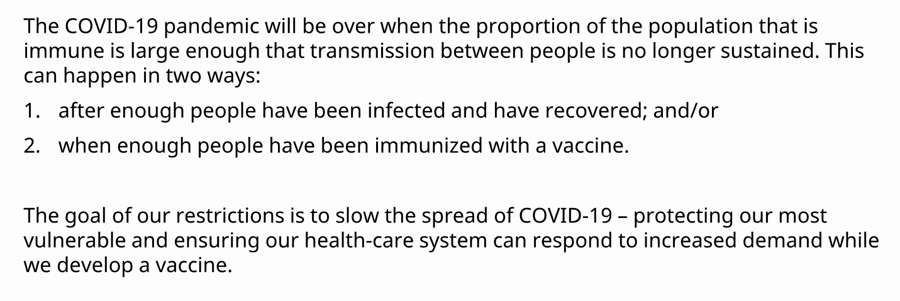
In terms of epidemiology, the ‘new normal’ lasts until there is a vaccine and/or collection of effective treatments, and/or that herd (community) immunity is achieved. Public health and medical experts expect that status to be achieved no sooner than Fall 2021. So we’ve got 18 months to go, at least.
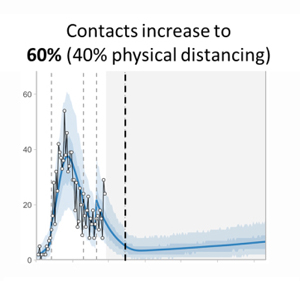
The current data modelling (as of April 30) — upon which the phases are based — is statistically stable for about four weeks.
The modelling indicates that increasing one’s contacts with other people by 60% is a suitable level (i.e. you are still working at physical distancing 40% of the time compared to pre-COVID social behaviours).
The BC flavour of ‘new normal’:
Horgan said that restarting economic activity will look different in B.C. than in other jurisdictions, because only a small number of sectors in the province were closed by public health order. “Many other provinces are just now reaching the level of safe operations B.C. has been able to maintain throughout the pandemic,” it was stated.
From the outset, B.C. established clear guidance, transparency and an evidence-based approach as hallmarks of our fight against COVID-19 in this province. Protective measures taken by the BC government have included:
- Providing physical distancing and hygiene guidelines for people, businesses and essential services to follow
- Banning mass gathering of more than 50 people to reduce the risk of outbreaks
- Closing bars, dine-in service at restaurants, and personal service operators, like barbers and dentists, to reduce the risk of transmission
- Reducing in-classroom learning and child care
- Requiring travellers to develop and stick to a 14-day isolation plan when arriving in B.C. from abroad
- Restricting visitors to health care and assisted living facilities to protect some of our most vulnerable people
- Postponing non-urgent and elective surgeries while maintaining urgent and emergency procedures
Social and economic components, with safety first:
To be living with meaningful social connections and with economic success in the meantime, the Restart BC plan offers a custom framework for BC. The focus is on safety and relying on individuals, businesses and community to use common sense and take responsibility for their own decisions within the guidelines.
British Columbians will move forward with safely restarting their province beginning in mid-May. Under B.C.’s Restart Plan, government will work closely with public health officials, businesses and labour organizations to lift restrictions in phases, gradually allowing for more social and economic activity, while closely monitoring health information to minimize the risk to the public.
“Our plan puts safety first. British Columbians have made enormous sacrifices so far, and it’s thanks to them that we’re able to begin to lift some restrictions,” Horgan said.
“We’ll allow activities to resume as the evidence and experts tell us it is appropriate to do so. By moving carefully and deliberately, we will help British Columbians get to a ‘new normal,’ where more of our social and economic life can resume,” the Premier said in a statement.
But in his live press confidence at 3 pm it was clear that a large component of ‘experts’ is the various business sectors themselves that will figure out how to work within guidelines.
Before and after the long weekend:
Provincial parks will open on May 14 ahead of the May long weekend. Then the Restart plan will kick in on May 19, after long weekend. “We wanted to make sure people had a starting point to start preparing,” said Premier Horgan today.
Grade 12 class of 2020:
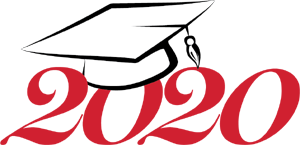
Premier John Horgan said today that he is truly sorry that students graduating from Grade 12 in June will not have the usual graduation ceremony due to the continued pandemic conditions.
He eluded to celebrations at a later time (as the Provincial Health Officer has also done in recent weeks) but realistically life will have moved on for those young adults, and a mass gathering later might be equally as painful as it will be symbolically joyful.
All Grade 12 students who meet the qualifications for graduation will receive their diploma, it was stated by Education Minister Rob Fleming back in March.
School districts are said to be preparing for various ways to help mark the completion of high school for Grade 12 grads, though events like proms and parties will not be possible.
Which presently (or effectively) closed sectors will open first:
Many businesses never closed during Phase 1 of the pandemic, but they adapted. That would include restaurants which adapted to take-out only, and grocery stores that shifted to offering online shopping with delivery as well as maintaining retail stores with physical distancing.
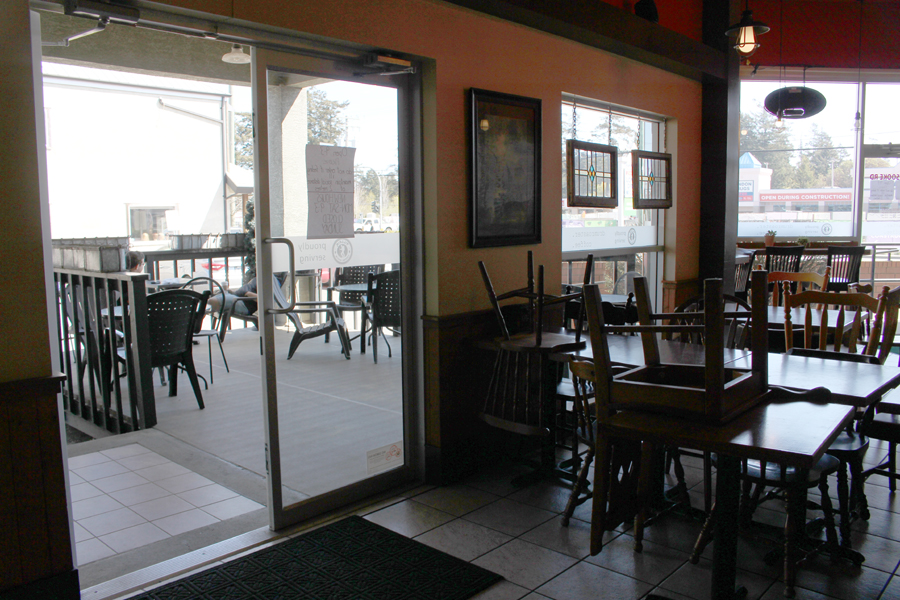
Some specific sectors that cannot open yet without further direction from the Provincial Health Officer are casinos and bars (and there seems to be no rush to achieve that), though restaurants and pubs can reopen within the guidelines (as seating and space between patrons can be more reliably achieved).
For the personal service sector some specific requirements are being laid out for adaptation in settings where there are reception areas (appointments to be booked in advance) and direct contact (such as dental offices, hair salons, massage, and physiotherapy); the use of non-medical masks will become commonplace as well as having plexiglass shields in place where close contact is otherwise unavoidable.
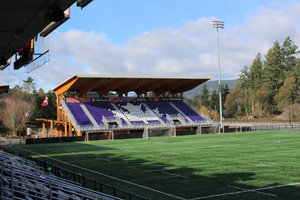
And this is a big cultural hit for summer on south Vancouver Island … there will be no professional sports events or big concerts, due to the continued limit of 50 people at gatherings.
Where there are large buildings that can accommodate 50 people but still accomplish physical distancing, certain activities can resume. Such locations might be large churches or arenas for religious or community gatherings.
On the smaller scale for community sports, the Premier said government has been working with BC Parks & Recreation to find ways for kids sports and summer camps to take place within public health guidelines. He gave as an example that little league local baseball could be played with each person using their own equipment and team organizers finding a way to keep bats clean. “We’ll see what local community organizations come up with,” said Horgan, himself a big sports fan.
Heading into Phase 2:
Today’s BC Health Ministry release says that B.C. is currently in Phase 1 of the restart plan, and that Phase 2 begins “mid-May”, which Premier Horgan identified as May 19 after the long weekend. So, after the long weekend, that includes:
- small social gatherings are possible (stepping out slowly into reconnections with family and close friends, being mindful that each connection brings with it all the connections of the incoming person);
- a resumption of elective surgeries and regulated health services like physiotherapy, dentistry, chiropractors and in-person counselling (more details on May 7);
- provincial parks open for day use only (effective Thursday May 14) and on June 1 many remaining facilities, including campgrounds, will reopen; a small number of parks that attract large crowds, or where reopening would pose a health risk to nearby communities, will remain closed.
- opening more non-essential businesses in keeping with safe operations plans (each business is to develop their own plan and make that available to employees and customers); and
- recalling the provincial legislature for regular sittings (as a way to keep democracy active, said Horgan).
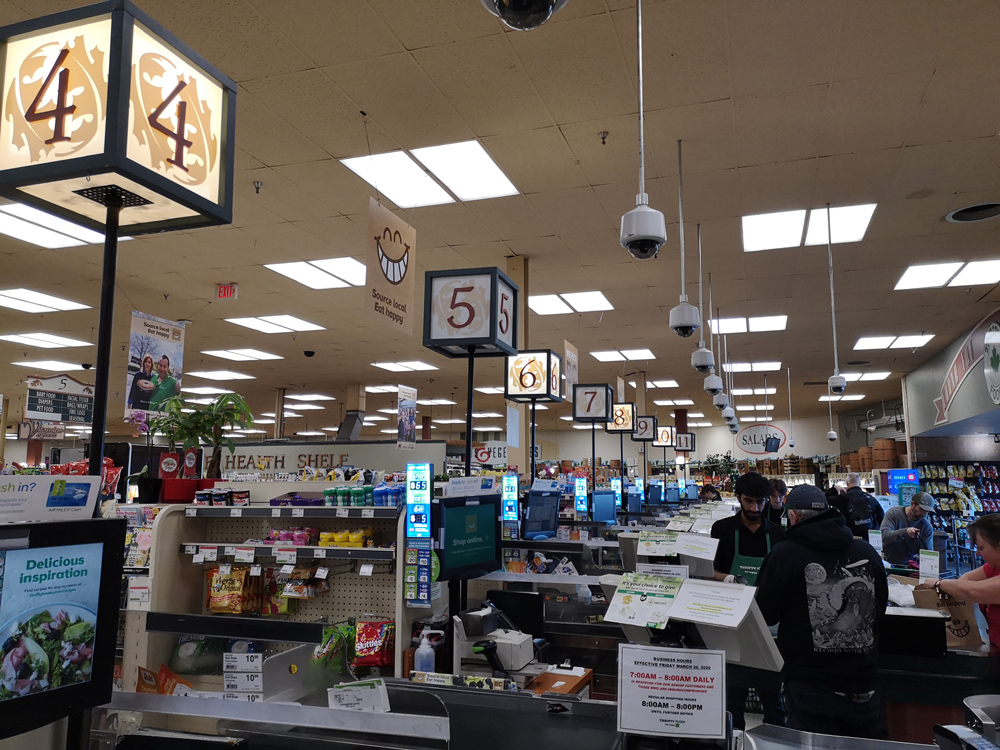
WorkSafeBC will play a role:
Essential businesses that have remained open during the pandemic (such as grocery stores and pharmacies, as well as banks and gasoline service stations) have done so safely with the support of WorkSafeBC.
Government says it will build on this successful experience by supporting all businesses as they take steps toward a successful reopening.
Sectors that were ordered closed will be asked to work with WorkSafeBC to develop plans to reopen safely. WorkSafeBC is developing industry-specific guidance to help employers bring workers and customers back safely. Any business restarting operations must ensure it is in compliance with the provincial health officer’s orders and in accordance with occupational health and safety guidance provided by WorkSafeBC.
Schools back into classrooms for September 2020:
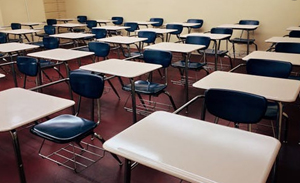
The K-12 school system will require daily screening of students and staff (for any symptoms of respiratory illness), fewer students in each classroom (to achieve physical distancing) including arrangements for staggered attendance, attention to handwashing and extra cleaning of surfaces, an emphasis on remote learning for older students (as younger students are generally requiring in-class care while parents work), and the use of non-medical masks for all group activities. For any international students coming to study in BC high schools, they will be required to undertake a 14-day self-isolation immediately upon arrival.
In the post-secondary sector of trade schools, colleges and universities, the principles are similar to those for K-12, with the specification of increased use of online learning balanced against the need of social interaction for learning and development.
For families with children in child care the drill is similar: routine daily symptom screening for all staff and children, routine and frequent environmental cleaning, and a clear policy for children or staff who have symptoms of cold, flu or COVID-19 (with any coughing or sneezing) to not be coming into a child-care facility.
Shifting to Phase 3 over the summer:
The current target period for the start of Phase 3 — which will include opening up of additional businesses and services — is between June and September 2020. But that will only take place if transmission rates remain low or in decline, it was stated by government today.
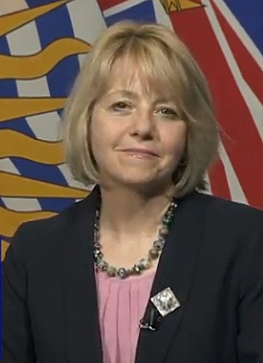
Given the presumed COVID-19 incubation period being 14 days, any adjustments in levels of restriction and containment can be expected every couple of weeks, though anything could be changed at any time, depending on what happens with levels of infection and how the hospital system is coping.
As part of keeping gatherings under 50 people, during the summer of 2020 there will be no conventions, live audience professional sports, or large concerts.
Today Premier Horgan encouraged people to stay close to home on the upcoming May long weekend and to enjoy the local parts of this beautiful province that British Columbians are fortunate to live in. Travelling to second properties or remote or rural communities risks bringing infection to smaller areas where health care supports may not be adequate for dealing with COVID-19. International tourism will not be allowed.
Rebooting non-urgent health-care:
Health-care strategies are being put in place for a 12 to 18-month period, which indicates how long the government expects it will take until a vaccine or set of treatments for COVID-19 are avaiable.
Testing will remain an important part of the management strategy going forward, though testing is still not recommended for individuals without COVID-19 symptoms.
A sustained communication strategy about public health strategies during the COVID-19 pandemic will continue.
Meanwhile, BC Health aims to safely reboot non-urgent health care services such as primary care, dental care, physiotherapy and chiropractic care, scheduled surgeries, outpatient clinics, and diagnostic and imaging services.
Phase 4 is about having reached ‘the other side’:
Phase 4 which is effectively full socioeconomic interaction and activity “will only be achieved when the threat of COVID-19 has been significantly diminished through widespread vaccination, broad successful treatments, evidence of community immunity, or the equivalent”, it was stated by the Ministry of Health today in their release. That is likely to be no sooner than Fall 2021, given the time it takes to research, develop, test, manufacture, distribute and disseminate a vaccine.
Most provincial parks will reopen, starting May 14, for day-use only. On June 1, many remaining facilities, including campgrounds, will reopen. A small number of parks that attract large crowds, or where reopening would pose a health risk to nearby communities, will remain closed.
Relying on people to continue with good personal hygiene and physical distancing:

A strong emphasis on personal hygiene for all British Columbians, including hand washing, physical distancing and staying at home if you are sick, will be crucial for the success of every phase of the plan.
While the B.C. government says it already has sufficient testing and tracking capacity, by continuing to increase these the government says it will be able to identify any flare ups in COVID-19 case numbers and address them. “This approach will support public safety and confidence,” it was stated in a government release today.
“Today, we’ve unveiled our plan for a slow and safe restart. We need to be vigilant, to make sure we keep flattening the curve of transmission,” Premier Horgan said. “There is much more to do. But we will get through this pandemic to better days by working together and keeping each other safe.”
Download the Restart BC Plan:
https://www2.gov.bc.ca/assets/gov/public-safety-and-emergency-services/emergency-preparedness-response-recovery/gdx/bcs_restart_plan_web.pdf
For a WorkSafeBC backgrounder, visit: https://news.gov.bc.ca/files/BG_Support_for_Workplaces_Resuming_Operation.pdf
For backgrounders on schools and parks, visit: https://news.gov.bc.ca/files/BG_Parks_and_Sites_and_In-Class_Learning.pdf
![Hon John Horgan, MLA [Langford-Juan de Fuca]](https://islandsocialtrends.ca/wp-content/uploads/2020/04/LFDJdFConstituency-WSVN-covid-banner-728x90-web.jpg)


